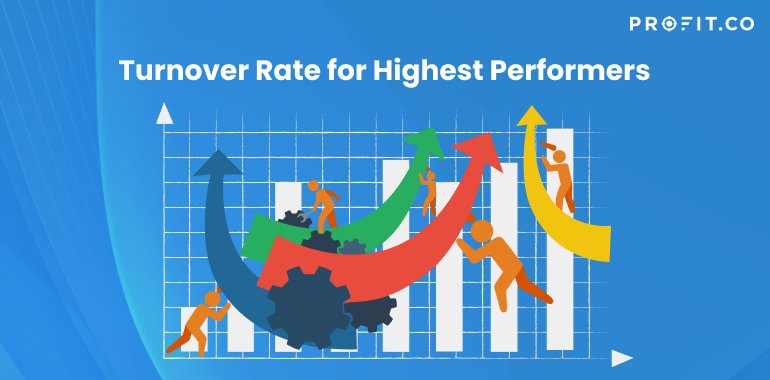Companies hate it when their people leave – but they hate it even more when a valuable person with vast experience leaves. According to some studies, if a person that has a salary of 100.000$ leaves, the company loses around 750.000$. It’s a big number, so the loss is mainly 5 times the employee’s salary.
Meanwhile, HR specialists tend to calculate this rate also by using a simple dividing formula – and it applies to experienced employees and the others as well.
Turnover Rate Calculation
Simply by dividing the number of valuable employees that left by the total number of valuable employees left in the company – and then multiplying the result by 100 – you’ll get the rate you’ve been looking for. In the end, the formula should look like this: Turnover rate for highest performers = (Highest performers that left / Highest performers left in the company) X 100.
This ratio can be calculated once a year or at any given time when the HR team loses its valuable human assets.
Turnover Rate Facts
If you’re thinking that a low turnover rate is ideal, then you are right. As said in many studies and articles, the turnover rate must be 0% – but even a 3% rate is also acceptable. Nobody likes to lose valuable human assets when the productivity is at its highest. However, when this happens, then that means that there’s a gap in the management that needs to be closed a.s.a.p. When the rate is very high, then a meeting should be spawned, and the matter should be discussed to identify the gap and close it.
In the US, the highest turnover rate for the highest performers is in the health and care area – which is 18% for all institutions. However, if you have your rate calculated, you can compare it to other companies in the same area of expertise and identify what you’re doing wrong.
Another way to address the turnover rates is to provide an exit interview for every employee that leaves. In this way, you can troubleshoot all the issues that make the valuable people leave. Also, the turnover rate can be calculated for every employee whether if he’s new or not, experienced or under-experienced. This will give you a certain statistic that you can run through the company’s management.
To be able to retain these high human assets, the best way is to provide them with feedback and ask for feedback constantly. In this way, your company will win their trust and not only. It can also boost morale and work efficiency over the top – which will cause the turnover rate will diminish considerably.
To conclude the above facts and information, the turnover rate is some kind of “infection” that spreads constantly from one company to another. But remember, this is not a killer rate with the proper management team.
Always remember to check the employee’s capability to work and what they want in return – except for the salary. Keeping your employee happy in the work environment is the key to a lower turnover rate.
